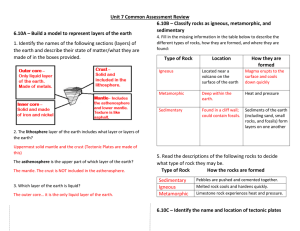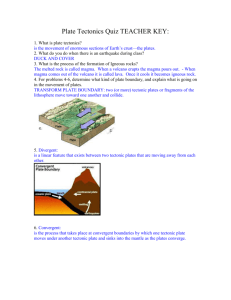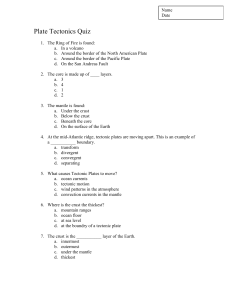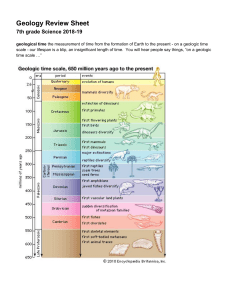Unit 7 Common Assessment Review
advertisement
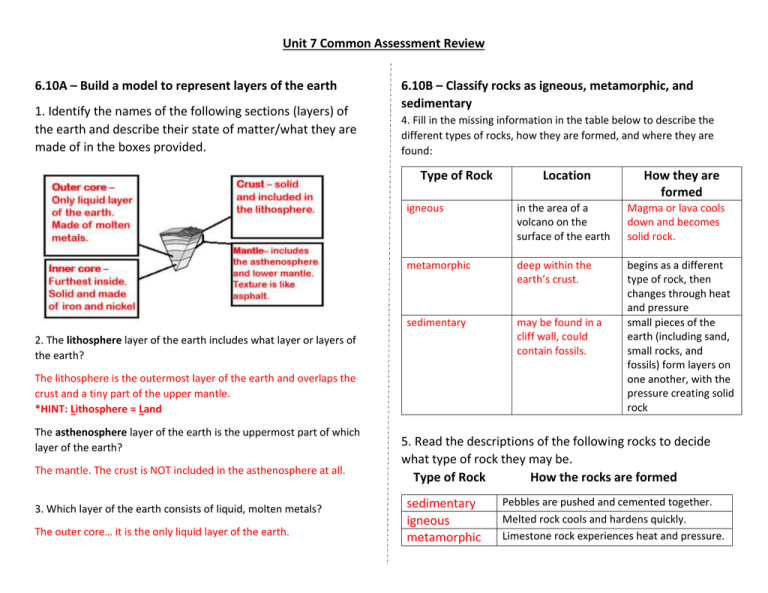
Unit 7 Common Assessment Review 6.10A – Build a model to represent layers of the earth 1. Identify the names of the following sections (layers) of the earth and describe their state of matter/what they are made of in the boxes provided. 6.10B – Classify rocks as igneous, metamorphic, and sedimentary 4. Fill in the missing information in the table below to describe the different types of rocks, how they are formed, and where they are found: Type of Rock in the area of a volcano on the surface of the earth Magma or lava cools down and becomes solid rock. metamorphic deep within the earth’s crust. sedimentary may be found in a cliff wall, could contain fossils. begins as a different type of rock, then changes through heat and pressure small pieces of the earth (including sand, small rocks, and fossils) form layers on one another, with the pressure creating solid rock The lithosphere is the outermost layer of the earth and overlaps the crust and a tiny part of the upper mantle. *HINT: Lithosphere = Land The mantle. The crust is NOT included in the asthenosphere at all. 3. Which layer of the earth consists of liquid, molten metals? The outer core… it is the only liquid layer of the earth. How they are formed igneous 2. The lithosphere layer of the earth includes what layer or layers of the earth? The asthenosphere layer of the earth is the uppermost part of which layer of the earth? Location 5. Read the descriptions of the following rocks to decide what type of rock they may be. Type of Rock How the rocks are formed sedimentary igneous metamorphic Pebbles are pushed and cemented together. Melted rock cools and hardens quickly. Limestone rock experiences heat and pressure. 6. Label the names of the tectonic plates in the blank rectangles provided. Unit 7 Common Assessment Review 6.10D – The effects of tectonic plates on the earth’s landforms 6.10C – Identify the name and location of tectonic plates 7. The squares in the following diagrams represent the movement of tectonic plates. What landform would result from each example? A ridge, rift or valley. _________________________ A mountain range, such as the Alps _________________________ 8. The following diagram shows two tectonic plates colliding. What will happen to the magma beneath the crust after this plate movement occurs? The magma will rise to the earth’s surface. What landform might this produce? Because this is happening between oceanic crust, it may form volcanic islands

